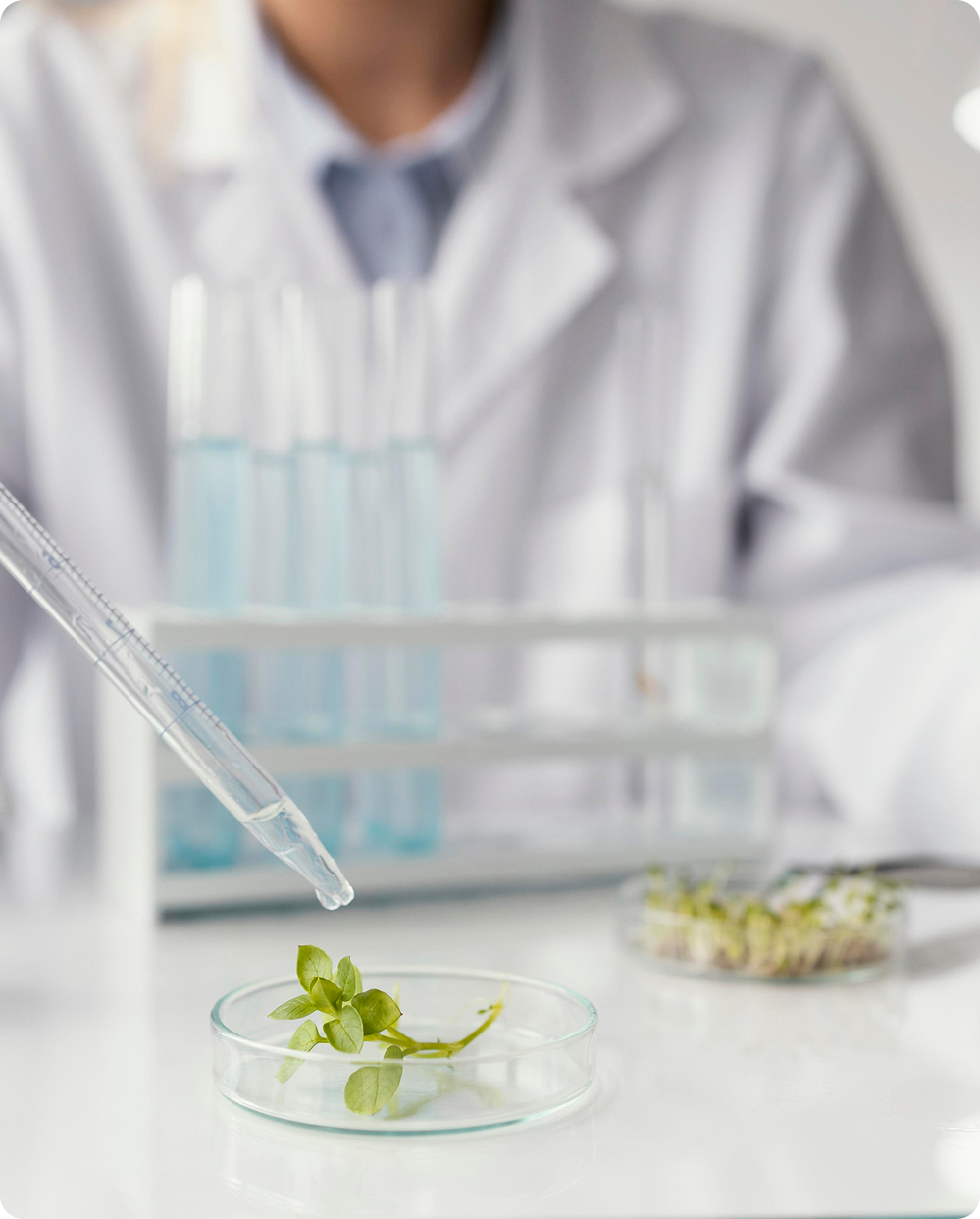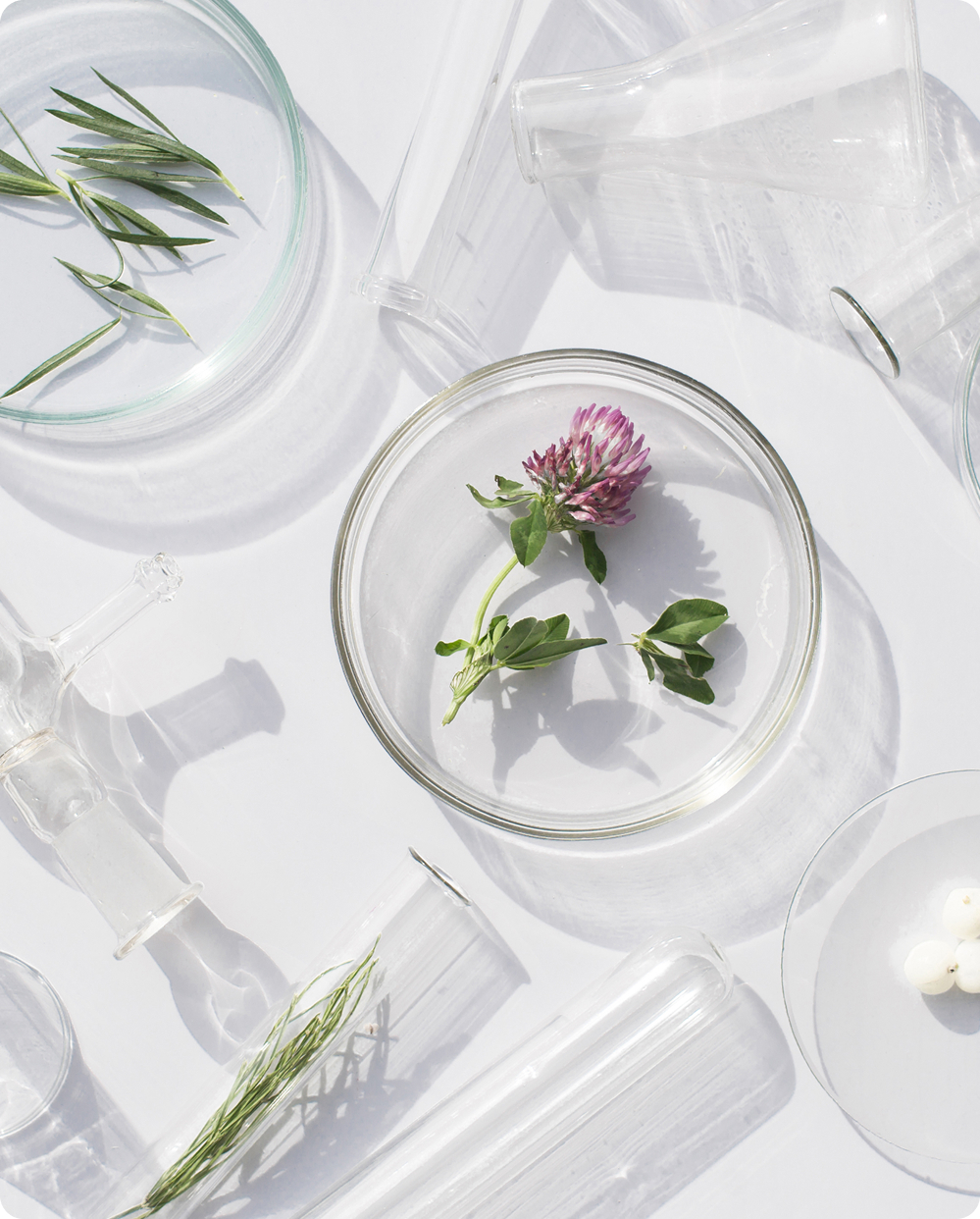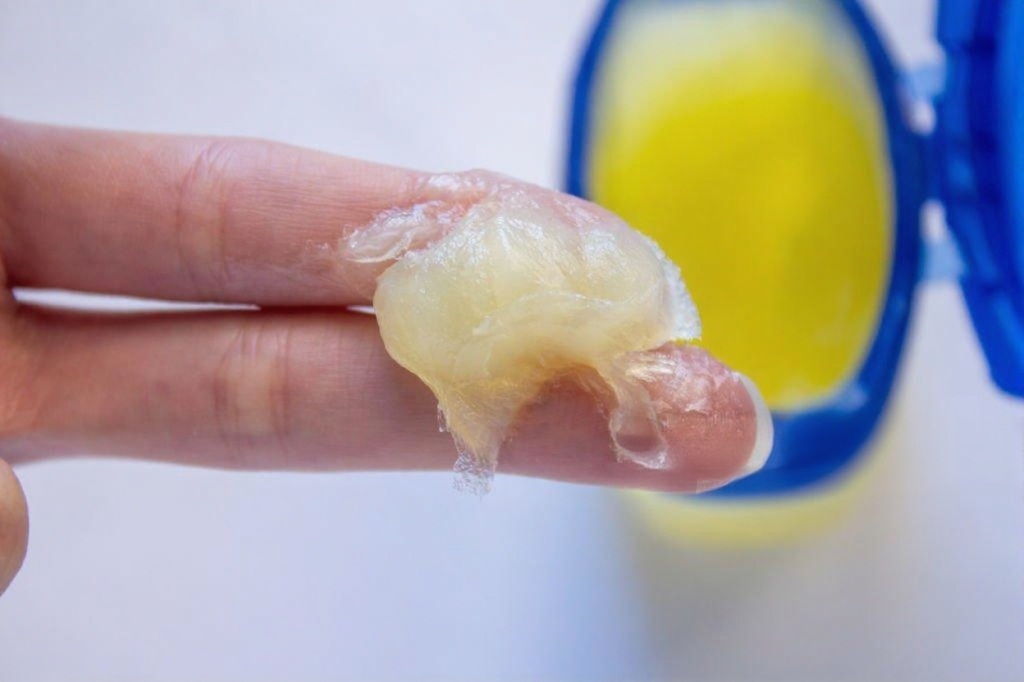Here's the thing about yeast infections: they're incredibly common, but that doesn't make them any less frustrating when you're dealing with one. Three out of four women will get at least one yeast infection in their lifetime [1], yet most of us know surprisingly little about what's actually happening in our bodies when we do.
Whether you're experiencing these symptoms for the first time or are tired of recurring infections, we'll help you take control by understanding what a yeast infection is and how to deal with it.
What is a yeast infection?
So what's actually happening when you get a yeast infection? Think of it as your body's ecosystem getting temporarily out of balance.
A vaginal yeast infection occurs when there's an overgrowth of Candida yeast in your vaginal environment [2]. But what's important to understand is that this isn't about "catching" something from outside your body. Candida actually lives in your vagina naturally, along with your mouth, digestive tract, and even on your skin [3].
The CDC puts it simply: "Many types of Candida live naturally in parts of the body and only cause symptoms if too much grows" [3]. In a healthy vaginal environment, Candida coexists peacefully with beneficial bacteria as part of your normal vaginal flora.
The keyword here is balance. When the balance in the microbiome is disrupted by factors like antibiotics, hormonal changes, or immune system fluctuations, Candida can multiply rapidly. That's when you start experiencing the uncomfortable symptoms we recognize as a yeast infection.
This is incredibly common. Clinical studies show that 29-49% of women report at least one lifetime episode [4], while other research suggests approximately 70% of women experience a yeast infection during their lifetime [5]. Up to 45% of women will have two or more infections [2].
What Is Vaginal Microbiome?
So, what is the vaginal microbiome? Think of it as your body's personal security team. When it's working properly, beneficial bacteria keep everything balanced, and yeast stays in check. When that system gets disrupted? That's when infections happen.
Your vagina is home to beneficial Lactobacillus bacteria that maintain an acidic environment that keeps troublemakers, including yeast, from taking over.
These beneficial bacteria typically make up 70-95% of the bacterial population in reproductive-age women [6]. The most common species include Lactobacillus crispatus, Lactobacillus gasseri, Lactobacillus iners, and Lactobacillus jensenii [6].
But how exactly do these bacteria protect you? They produce lactic acid that maintains your vaginal pH in a healthy acidic range (around 3.45 to 4.12 in healthy women [7]). This acidic environment naturally inhibits the growth of harmful bacteria and yeast [6].
They also produce other antimicrobial compounds like hydrogen peroxide and compete with potential troublemakers for nutrients and space on vaginal tissues. Recent research shows that vaginal lactobacilli can significantly inhibit both the growth and development of Candida [8].
The estrogen connection is key here. Estrogen helps maintain vaginal tissue health and supports these beneficial bacteria [9]. That's why yeast infections are more common during reproductive years when estrogen fluctuates and can become more frequent during menopause when estrogen levels decline [9].
What Triggers Yeast Infections?
Antibiotics are the biggest culprit. They're designed to kill bacteria, but they can't tell the difference between harmful bacteria causing an infection and the beneficial bacteria protecting your vaginal health [2,10]. When antibiotics wipe out your protective bacteria, yeast can multiply rapidly in the less competitive environment.
Hormonal changes create perfect conditions for yeast growth. High estrogen levels from pregnancy, certain birth control methods, or hormone replacement therapy can favor yeast overgrowth [2,9]. Estrogen increases glycogen (a type of sugar) in vaginal tissues, essentially providing more food for yeast organisms [9].
This explains why yeast infections are more common during pregnancy, particularly in the second and third trimesters when estrogen levels peak.
Your immune system plays a crucial role in keeping yeast populations balanced [10]. Conditions that suppress immune function, including diabetes, HIV infection, chemotherapy, or chronic stress, can reduce your body's ability to keep yeast in check. Even temporary immune suppression from illness or lack of sleep can sometimes trigger infections.
Blood sugar control matters more than you might think. Elevated blood glucose levels create an environment that favors yeast growth [2,10]. Women with poorly controlled diabetes face significantly higher risk for yeast infections.
Lifestyle factors can tip the balance too. Wearing tight, non-breathable clothing creates warm, moist conditions yeast loves. Using douches or harsh feminine hygiene products disrupts your natural vaginal environment [2,9].
What Do Yeast Infections Feel Like?
Okay, we learned what a yeast infection is and what triggers it, but how do you tell if you have one? Recognizing yeast infection symptoms is crucial to getting appropriate treatment and distinguishing these infections from other conditions that need different approaches.
Intense itching is usually the star of the show. This isn't just mild irritation. We're talking about persistent, sometimes overwhelming itching that can interfere with sleep, work, and daily activities [2]. The itching typically affects both the internal vaginal area and external vulvar tissues, often getting worse at night or when wearing tight clothing.
Pain shows up in several ways. Many women experience burning during urination, which happens when acidic urine comes into contact with irritated vulvar tissues. Pain during sex is also common since inflamed tissues are more sensitive to friction and pressure [2,9].
Discharge. Yeast infection discharge is typically thick, white, and clumpy, often compared to cottage cheese or ricotta cheese [2]. This discharge usually doesn't have a strong odor, so if you notice a fishy or foul smell, you might be dealing with something else entirely.
But symptoms aren't always textbook. Some women experience minimal discharge changes while still having significant itching. Others have primarily external symptoms affecting the vulvar area, or mild, persistent symptoms that don't seem severe enough to warrant treatment but won't go away on their own.
Here's something that might surprise you: studies show that women correctly self-diagnose yeast infections only about 50-60% of the time [2]. This means nearly half of women who think they have a yeast infection actually have a different condition requiring different treatment.
This isn't a reflection of your intelligence or knowledge about your body. It's simply that many vaginal conditions can cause similar symptoms, and distinguishing between them often requires testing that can only be done in a healthcare setting. So let's dive into differences:
Yeast Infection vs BV
What is the biggest difference between yeast infections and bacterial vaginosis (BV)? The smell. While yeast infections typically don't have much odor, BV has a distinctive fishy smell that gets stronger after sex.
Here's what's happening with BV: it occurs when your vaginal bacteria get out of balance, but it's not about yeast overgrowth. Instead, your beneficial lactobacillus bacteria decrease while other bacteria take over [11]. BV is actually the most common vaginal condition among women of reproductive age, even more common than yeast infections.
BV symptoms include thin, gray or white discharge with that telltale fishy odor, especially noticeable after sexual intercourse or during menstruation. The itching, if present at all, is usually much milder than what you'd experience with a yeast infection. Some women with BV experience mild burning during urination, but it's less common than with yeast infections.
The fishy odor happens because the bacteria involved in BV produce compounds called amines. These become more noticeable after sex because semen is alkaline and temporarily increases vaginal pH, making the amines more volatile.
BV requires different treatment than yeast infections. While yeast infections respond to antifungal medications, BV needs antibiotics or other approaches that target the bacterial imbalance.
Yeast Infections vs UTIs
Urinary tract infections (UTIs) affect your urinary system, not your vagina, but they can cause symptoms that overlap with vaginal infections, leading to confusion.
The key difference lies in where you feel the burning. UTI burning happens internally as urine passes through the urethra, while yeast infection burning is external and occurs when urine contacts irritated vulvar skin.
UTI symptoms include internal burning during urination, a frequent urge to urinate, passing small amounts of urine frequently, cloudy or strong-smelling urine, and pelvic pain. Sometimes you might see blood in your urine.
UTIs don't typically cause vaginal discharge or the intense external itching that characterizes yeast infections. The urinary symptoms are much more prominent.
Here's where it gets tricky: it's possible to have both a yeast infection and a UTI at the same time. It's also common to develop a yeast infection after taking antibiotics to treat a UTI, since those antibiotics can disrupt your vaginal bacteria balance.
UTIs require antibiotic treatment and won't respond to antifungal medications used for yeast infections. That's why getting the right diagnosis matters so much.
What If Symptoms Overlap?
Sometimes your symptoms don't fit neatly into one category, or you might be dealing with more than one condition at the same time. This is more common than you might think.
You could have a yeast infection and a UTI simultaneously, or develop a yeast infection after taking antibiotics for a UTI. Some women experience symptoms that could indicate multiple conditions, making self-diagnosis challenging.
When symptoms overlap or don't clearly match one pattern, professional evaluation becomes even more important. Healthcare providers can perform specific tests to identify exactly what's going on and ensure you get the right treatment for your specific situation.
Don't feel frustrated if your symptoms don't match textbook descriptions perfectly. Bodies are complex, and vaginal health conditions can present differently in different women.
Why Do I Keep Getting Yeast Infections?
For most women, yeast infections are occasional inconveniences that respond well to treatment. But for less than 5% of women, they become a recurring nightmare that significantly impacts quality of life [10,9].
Recurrent yeast infections are medically defined as having four or more episodes within a 12-month period [10,9,12]. This represents distinct episodes that resolve with treatment but return within a short timeframe.
There are two main types of recurrent infections. Idiopathic cases occur in women with no apparent underlying conditions. The cause is poorly understood and seems related to individual variations in immune response, genetic factors, or subtle vaginal microbiome changes that create ongoing susceptibility.
Secondary cases are linked to identifiable factors like frequent antibiotic use, poorly controlled diabetes, immunosuppressive conditions, hormonal factors, or lifestyle factors that consistently disrupt the vaginal microbiome [10].
Different yeast species can be the culprit. While most initial infections are caused by one type of yeast, recurrent infections sometimes involve different species that don't respond as well to standard treatments [10]. This is why healthcare providers often recommend culture testing for women with recurrent infections.
Supporting your body's natural defenses becomes crucial when dealing with frequent infections. Maintaining optimal vaginal pH and supporting beneficial bacteria populations can be part of a comprehensive approach.
How to Treat Yeast Infections?
Most uncomplicated yeast infections can be effectively treated with over-the-counter antifungal medications. These come as creams, suppositories, and tablets you insert into the vagina, with treatment courses ranging from one to seven days.
For severe infections, recurrent infections, or infections that don't respond to over-the-counter treatments, your healthcare provider may prescribe stronger antifungal medications.
Natural support approaches can complement medical treatment. Maintaining optimal vaginal pH and supporting beneficial bacteria populations helps your body's healing process and may help prevent future infections.
Before starting any treatment, confirm that you actually have a yeast infection. Remember, women correctly self-diagnose only about 50-60% of the time [2]. Using the wrong treatment for the wrong condition can delay healing and sometimes make symptoms worse.
For comprehensive treatment information, including detailed medication options and natural approaches, see our complete guide on treating yeast infections.
When to See Your Doctor
Professional evaluation is essential in several situations, even though many yeast infections can be treated at home.
First-time symptoms always warrant a professional visit. What feels like a yeast infection could actually be BV, a UTI, or another condition requiring different treatment. Getting the right diagnosis from the start saves time, money, and discomfort.
Severe symptoms need professional attention. If you're experiencing extensive swelling, significant pain that interferes with daily activities, or symptoms that seem different from what you've experienced before, seek care.
Treatment failures require evaluation. If you've completed a full course of over-the-counter treatment and symptoms haven't improved, or if they return within a few weeks, it's time to see your healthcare provider.
Recurrent infections need specialized care. If you're experiencing four or more infections within 12 months, you need medical evaluation. Recurrent infections often require different treatment approaches and may indicate underlying health conditions.
Pregnancy changes the game. Yeast infections are more common during pregnancy due to hormonal changes, but treatment options are more limited. Always consult with your healthcare provider before starting any treatment during pregnancy.
Underlying health conditions require extra caution. Women with diabetes, HIV, or other conditions affecting immune function should always seek professional evaluation for vaginal symptoms.
Red flag symptoms requiring immediate attention include fever, severe abdominal or pelvic pain, or any symptoms that seem serious or concerning.
Conclusion
Here's what it comes down to: yeast infections are incredibly common and completely manageable when you understand what's happening in your body.
Your vaginal health is an important part of your overall health. Don't hesitate to seek professional care when you need it, and don't feel embarrassed about discussing these issues with your healthcare provider.
Knowledge is power when it comes to your vaginal health. You now have the tools to recognize, address, and prevent yeast infections with confidence.
References
[1] Sobel JD. Vulvovaginal candidosis. Lancet. 2007;369(9577):1961-71.
[3] Centers for Disease Control and Prevention. Candidiasis. Available at: https://www.cdc.gov/candidiasis/index.html
[10] Sobel JD. Recurrent vulvovaginal candidiasis. Am J Obstet Gynecol. 2016;214(1):15-21.
[12] Vulvovaginal Candidiasis - STI Treatment Guidelines - CDC. Available at: https://www.cdc.gov/std/treatment-guidelines/candidiasis.htm
This article is for educational purposes only and is not intended to replace professional medical advice. Always consult with a healthcare provider for diagnosis and treatment of medical conditions.








